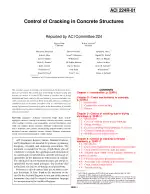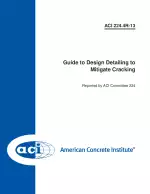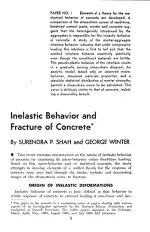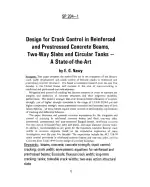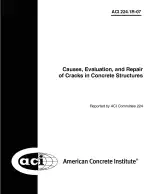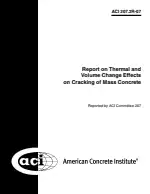ACI 231R-10 PDF Download
Standard EN SampleReport on Early-Age Cracking: Causes, Measurement, and Mitigation
Also Known As:
The ACI 231R-10 standard addresses the issue of early-age cracking in concrete. The standard acknowledges that early-age cracking is a common problem in the concrete industry and can be influenced by factors such as materials selection, environmental conditions, and field practices.
The standard specifically focuses on two types of deformations that contribute to early-age cracking: thermal- and moisture-related deformations. These deformations are associated with shrinkage and thermal expansion/contraction properties of concrete and can lead to cracking if not properly addressed.
The standard provides a comprehensive review of the causes of deformation and cracking, including the effects of temperature changes, moisture movement, and restraint due to formwork and reinforcement. It also discusses various test methods for assessing shrinkage and thermal deformation properties to help identify potential issues early on.
Furthermore, the standard offers mitigation strategies for reducing the occurrence of early-age cracking. These strategies involve implementing measures to control temperature and moisture differentials, using appropriate mix designs and materials, and adopting construction practices that minimize restraint and allow for proper curing.
| Descriptors | autogenous shrinkage; cracking; early-age; heat of hydration; measurement; microstructure; mitigation methods; shrinkage; shrinkage cracking; sustainability; thermal cracking; thermal properties |
| Language(s) | English |
| ISBN | 9780870313592 |
| File Size | 7.4 MB |


